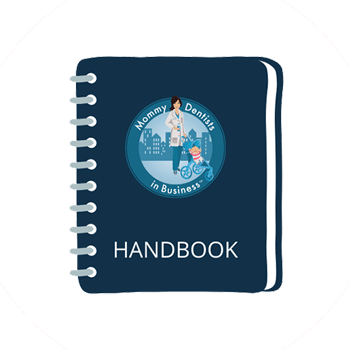MDIB Quarterly Newsletter
Jan. 2022

Fifteen Minutes to Financial Peace:
Take the 50/30/20 rule and evaluate your progress on the path to financial freedom.
If there is one thing working mothers don’t have much of, it’s time. And while there are plenty of things that we need to clear off our plates, ensuring our financial security should not be something we put aside for another day.
Cain Watters & Associates financial advisor and CPA Brittany Frazier says, “I get it, we are all short on time. However, one of the tools I like to use in getting started in our planning with clients is a simple concept called Know Your Ratio.”
Understanding this ratio can allow you to self-diagnose your financial health in less than 15 minutes, telling you if you’re on the path toward financial freedom.
This is a tool used to evaluate, track and hold CWA clients accountable toward their wealth accumulation goals by ensuring they are not overspending today, undersaving for tomorrow, or falling short on tax payments. This benchmark is a simple and realistic view of ideal spending, and a reminder of where your money should be positioned to ensure you can live both comfortably today, and into tomorrow.
Simply stated, the 50/30/20 Rule evaluates the three main categories of where your money goes. Each of the three numbers are a percentage of your total net income.
– 50 percent: represents the amount of your lifestyle spending and debt payments
– 30 percent: represents the amount you pay in taxes including federal, state and payroll taxes
– 20 percent: represents your savings, including retirement savings as well as personal and college savings
Think about it
Too often people make the mistake of starting an exercise like this by focusing on the largest piece first: personal spending and debt payments.
It is a mistake to start with the 50% category first because it is the most difficult category to define and track accurately. How many times have you started or revised a personal budget? Do you like tracking your monthly spending? Most people do not.
A majority of the budgets that CWA financial planners see are off by at least 20-25%. People are terrible at estimating how much money they spend, and are even worse at holding themselves accountable when it comes to sticking to that spending goal.
This old way of budgeting, tracking and then saving what is left over is about as successful as a New Year’s diet resolution. There is a better way—more importantly, you don’t have to fool yourself or waste time tracking how many pumpkin spice lattes you had this month.
Step 1: Capture and define your net income
Asking a dentist how much money they make is not an easy question. Here is a hint: take a look at your December 2021 profit and loss statement for your practice. Take your net collections and subtract direct costs (staff salaries, payroll taxes, dental and office supplies as well as any lab or implant costs) and your fixed costs. The result is your net income before pension funding, salary (including spouse salary), perks or any debt, depreciation, interest expense, or taxes. Use this number, write it down.
Step 2: Calculate your personal ratios
Let’s start with the smallest ratio, the savings component. Gather your year-end 2021 pension reports and investment statements. Add up your total contributions to your pension plans (do not count the employer staff costs), IRAs and any after-tax personal savings that you did in 2021. Write down what you saved in 2021.
Next, look at the 30% category which covers taxes. Find your 2021 personal tax returns and W-2’s to capture your total federal, state and payroll taxes paid. When capturing your payroll taxes, make sure that you are picking up both the employer and the employee portion of payroll taxes for your salary and your spouse’s salary. Record this number in total.
Finally, we can look at the 50% category which consists of personal spending and debt payments. Take your net income, subtract what you saved and what you paid in for taxes and the rest goes into this category. Simply put, if you didn’t save it or send it to the IRS then you spent it on something.
Step 3: Analyze your numbers
The next part of this exercise is to analyze the results. To illustrate the application let’s use hypothetical data from a meeting with a long-term client. We will look forward and leverage the IRS’s 2022 contribution limits in this example. Her practice net income is $450,000. We start her annual session by looking at her family’s total savings in 2022:
– Salary deferrals = $20,500
– Spouse salary deferrals = $20,500
– Employer contribution = $40,500
– Roth IRA funding = $6,000
– Spouse Roth IRA funding = $6,000
This is a total savings of $93,500 or 20.78% of their $450,000 net income.
This quick calculation immediately told us the clients’ savings component of their financial plan was on track. Because they were saving into the tax-deferred and tax-free environments, their financial planner could assume their tax planning was also going to fit in the 30% category.
After this quick exercise the team was able to confirm that the big picture of their financial plan was in-line and on-track. The client had financial peace of mind knowing that they were in balance. That allowed us to spend the rest of the day diving into specific questions, concerns and goal setting for both their practice and personal lives. By starting with the savings first, then taxes, we didn’t even need to take a deep dive into the personal spending amounts, since we knew they were meeting all of their other goals.
What if I’m not in balance?
Many times, especially when meeting with new clients, we will find that the ratios aren’t lined up to the 50/30/20 goal. When this happens, the data points you to the area that you need to focus on first.
Clients usually struggle with a lower savings ratio, which presents many problems. When the savings ratio is low, more than likely personal spending and debt ratio is too high. But that’s not all.
Let’s think about the client with a total net income on $450,000. If they were only saving 5% of their income into a brokerage account, which doesn’t have the same tax advantages, then their ratio would look something like this:
– 61% or $274,500 in spending and debt service
– 34% or $153,000 in taxes paid
– 5% or $22,500 in savings
At 5% they obviously aren’t saving enough for retirement, but this situation leads to an even bigger issue. The client in that case would also be used to a more expensive lifestyle. Because most of us want to retire with the same standard of living we have during our careers, they are in desperate need of saving more than even the 20 percent ratio to keep up with themselves in retirement. All the while, they are paying the IRS more than they have to—if this is not reversed, this client would never reach financial freedom.
Keep in mind
The best thing about the 50/30/20 ratio is that it works on everyone no matter your net income level. I’ve had clients that net over $1 million a year, and with proper tax planning, are able to keep their taxes at or under 30% of their total net income. The same ratio works just as well at the lower income levels, as these earners will have a lower marginal federal tax rate, yet their payroll taxes as a percentage of their total income will be much higher.
I’ve even used the 50/30/20 ratio with some of my client’s adult children. If you can educate your adult children on this concept at an early age and maintain it as their careers progress, you will have given them the gift of long-term financial independence.
It’s important to note however, that depending on a client’s retirement plan and goals, sometimes individuals will need to save more than just the 20%. This could be due to a myriad of reasons, including starting to save later, desiring to spend more in retirement, or desire to leave cushion or a set amount in their estate upon their death.
What’s your ratio?
At CWA, when we meet clients with a low savings ratio, we approach the conversation educationally. Simply understanding the philosophy of the 50/30/20 Rule can help them identify their problem. Perhaps the problem is as simple as saving into the wrong environment. Or, perhaps the client is making poor choices with respect to paying down or paying off personal and practice debt too aggressively. Other times, we may need to make hard choices with respect to personal spending decisions.
We know it’s hard. Let our professionals help you reach your goals. Contact us at cainwatters.com/contact for a complimentary consultation to review your current ratio.
Disclosure: Cain Watters is a Registered Investment Advisor. Cain Watters only conducts business in states where it is properly registered or is excluded from registration requirements. Registration is not an endorsement of the firm by securities regulators and does not mean the adviser has achieved a specific level of skill or ability. Request Form ADV Part 2A for a complete description of Cain Watters investment advisory services. Diversification does not ensure a profit and may not protect against loss in declining markets. Past performance is not an indicator of future results.

About MDIB
Our community is focused on education, support and resources.

F. A.Q.s
Answers for membership, accounts and sponsorships.

COVID-19
Industry leaders share advice for this pandemic.

Partner
Media resources and sponsorship opportunities



